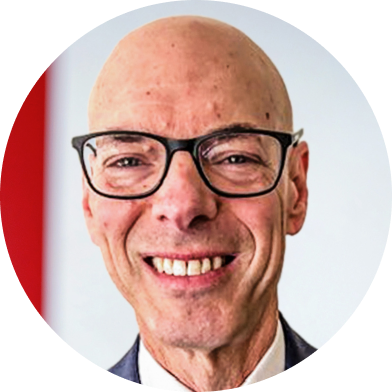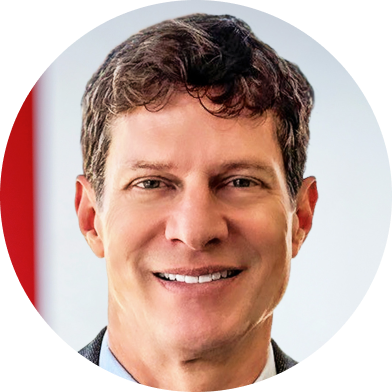Manager perspectives
Patience and contrarian growth: 40 years of PRIMECAP Fund
November 12, 2024
November marks the 40th anniversary of Vanguard PRIMECAP, a growth-oriented active fund that features out-of-favor U.S. stocks and long holding periods. The fund, which is subadvised by PRIMECAP Management Company, recently reopened to new investors for the first time since 2004. In this conversation, portfolio managers Joel Fried and Al Mordecai discuss the fund’s origins and philosophy, their team’s active edge, and the portfolio’s relative concentration in biotech and pharma stocks.
Tell us about PRIMECAP Management Company. How and when was the firm founded? What does the firm look like in terms of clients, assets, and investment offerings?
Joel Fried: PRIMECAP is based in Pasadena, California. The firm was founded in 1983 by Howard Schow, Theo Kolokotrones, and Mitch Milias. At the time, they were all senior portfolio managers at the Capital Group, and they had a desire to work for a smaller firm. The firm they imagined would limit the number of client relationships and employees, freeing them to spend most of their time pursuing their passion: investing. This new firm would preserve the investment philosophies that had served them so well at Capital, namely, fundamental research, a long-term time horizon, and individual decision-making.
Today, we manage about $140 billion,1 which includes assets we subadvise for Vanguard, which include the PRIMECAP Fund, the Capital Opportunity Fund, and the PRIMECAP Core Fund. We also manage our own family of funds, the PRIMECAP Odyssey Funds, and separately managed accounts for 20 pension fund, endowment, foundation, and sovereign wealth fund clients.
What are the origins of PRIMECAP’s partnership with Vanguard?
Joel: Shortly after PRIMECAP was formed, Vanguard founder Jack Bogle and former CEO Jack Brennan asked us if we would have interest in running a mutual fund similar to the Capital Group’s AMCAP Fund, a fund that Howard Schow had been lead counselor for while he was at Capital. They wanted to balance out Vanguard’s value-oriented fund lineup with a new growth fund. Ironically, mutual funds were not in our original business plan, so we graciously declined Vanguard’s initial invitation. But like with all important decisions at PRIMECAP, we slept on it for a few nights, and fortunately, we concluded that managing a mutual fund could be a compelling idea. So, we called Jack Bogle back and arranged to meet him at a restaurant in Manhattan, and with a handshake, the partnership with Vanguard was born, as was the PRIMECAP Fund.
Vanguard PRIMECAP Fund has one of the most enviable performance records in the investment industry, outperforming the S&P 5002 by an average of about 2% annually since its inception. What edge do you have that accounts for that sustained level of success?
Joel: All investments come down to judgment. PRIMECAP strives to provide an ideal environment for judgment to have a chance to develop and refine, and we believe that's our edge. It's also our long-term approach to investing. We operate in an industry that is dominated by a focus on short-term returns. Our long-term focus affords individuals the luxury of thinking out many years. Often, ideas take time to germinate, and during difficult periods, it's this focus that enables analysts and portfolio managers to remain steadfast in their positions when their conviction dictates doing so.
What are the advantages of your multi-counselor approach? How do you think about risk control at the portfolio level, such as when multiple PMs have strong conviction in the same security?
Al Mordecai: We have five portfolio managers for each fund we manage. Each of us individually is focused on, and held accountable for, our sleeve of each fund. We achieve diversification from having several different portfolio managers operating independently, and each of us has a different background. But the biggest advantage is that when a portfolio manager leaves the firm or stops managing money, as was the case for two of our founders back in 2012 and 2014, you don't have a major change in the fund.
Regarding risk, we think the best way to reduce risk is to have individual portfolio managers fully responsible for their sleeve, meaning we’re each held accountable for our results. Our aim is to maximize individual discretion for each portfolio manager, because we believe that's what gives us the best chance of outperforming the market. That said, we do limit ourselves to owning no more than 15% of any individual company. Also, we can't buy more of a stock once it is at or above a 5% position within that fund.
The average tenure of the PRIMECAP Fund’s managers is 30 years. How do you maintain that continuity while also preparing the next generation of investment talent?
Al: Our approach starts with recruiting at top MBA programs, where we're looking for exceptional candidates who want to make a career in this business. When analysts come on board and start recommending stocks within their area of coverage, they're given real money to manage, and their performance is tracked relative to an index. Tracking their performance in these real portfolios over several years, in our opinion, is the best way to assess their potential. Over time, some of these analysts will then be given money to manage more broadly, say 1% to 2% of the fund, giving them and us an opportunity to see how they fare as portfolio managers. So, by the time they become a named portfolio manager managing upwards of 15% of each fund, they have a proven track record.
The fund has been underweight in the big-name U.S. tech companies that have accounted for so much of U.S. equity market returns in recent years. Can you describe your approach to position-sizing?
Joel: Each portfolio manager makes his or her own decision on position sizes. So, when looking at position sizes in the fund, you’re seeing the aggregation of many individuals’ decisions. Our underweight in the big-name tech stocks has certainly been a headwind to results over the past few years. We reduced our technology holdings prematurely. It’s particularly disappointing considering that PRIMECAP Fund has been overweighted in technology stocks for most of its existence. Among the largest names, we have been overweight Microsoft, Alphabet, Tesla, and NVIDIA at various times.
However, the stock market is a great discounting mechanism, and in our collective judgment, the roughly $15 trillion market value of the Magnificent Seven—roughly 30% of the value of the S&P 500 today—discounts even the most optimistic forecasts. Insatiable demand for AI infrastructure won't persist indefinitely, and we believe the portfolio is well positioned to capitalize once demand begins to cool.
Historically, the fund has been significantly overweight in U.S. pharma and biotech. What is it about your investment process that produces a concentration in those companies?
Al: Pharmaceutical and biotech companies often appeal to us because they're developing products that address huge unmet needs. The value they create for society both in terms of improving quality of life and extending life, far exceeds the cost of their products.
Alzheimer's is a good example. There are 6 million people in the United States currently suffering from this horrible disease.3 Over 10% of people over the age of 65 will develop Alzheimer’s.4 According to the CDC, the costs of treating Alzheimer's disease are projected to jump to between $380 and $500 billion annually by 2040. New beta amyloid drugs have shown a 30% improvement versus placebo in the progression of this disease.
More generally, biopharma innovation is accelerating. We're developing a deeper and more fundamental understanding of disease. The cost of sequencing an entire genome has gone from $1 billion in 2000 to less than $200 today.5 We're better able to target diseases now with new types of therapies, including gene therapy, antibody drug conjugates, MRNA, and so on. And we think that AI and digital tools are going to increase the productivity of these companies even more.
Eli Lilly is the fund’s largest exposure and a name you’ve held for decades. What’s your experience with that stock through the years?
Al: Often, our best stocks require a period of pain. We invested in Eli Lilly in the early 2000s, and at the time, it was undergoing a meaningful patent cliff with drugs like Zyprexa and Cymbalta, which are psychotropic medications. But the market was missing Lilly’s long-term potential based on robust early-stage pipeline products being developed to treat high unmet needs including diabetes and obesity, neurodegeneration diseases, cancer, and autoimmune diseases.
This is a great example of the market being focused on the short-term depressed current earnings due to high R&D spend and upcoming patent expirations. Looking long term, we saw a rich, early-stage pipeline of therapies and clinical trials. Eli Lilly built strong capabilities and know-how with its investments in the incretin space, which first yielded Trulicity and later Tirzepatide for diabetes, and now weight loss and the Alzheimer's area. This positioned the company to be in a leadership position when the science in these two large disease states began to produce results.
We stuck with Lilly through periods of underperformance and as the stock began to outperform, because we believe the company had strong management and a sound strategy, prioritizing R&D investments through good times and challenging times.
Why do you think the PRIMECAP’s relationship with Vanguard has endured?
Joel: Our firms share many values, notably prioritizing shareholders’ interests. Our cultures are similar in terms of the character and integrity with which we operate. Strong long-term performance has also clearly played a role. We are immensely proud of our partnership with Vanguard and the value we’ve been able to deliver to investors. It’s been an extraordinary 40 years.
This interview was edited for length and clarity.
1 PRIMECAP Management, as of September 30, 2024.
2 The fund’s standardized performance can be found here.
3, 4 2024 Alzheimer’s Disease Facts and Figures. Alzheimer’s Association, 2024.
5 Illumina, Inc., as of April 4, 2023.
Notes:
For more information about Vanguard funds, visit vanguard.com to obtain a prospectus or, if available, a summary prospectus. Investment objectives, risks, charges, expenses, and other important information are contained in the prospectus; read and consider it carefully before investing.
Past performance is not a guarantee of future returns.
All investing is subject to risk, including possible loss of the money you invest. Diversification does not ensure a profit or protect against a loss.


